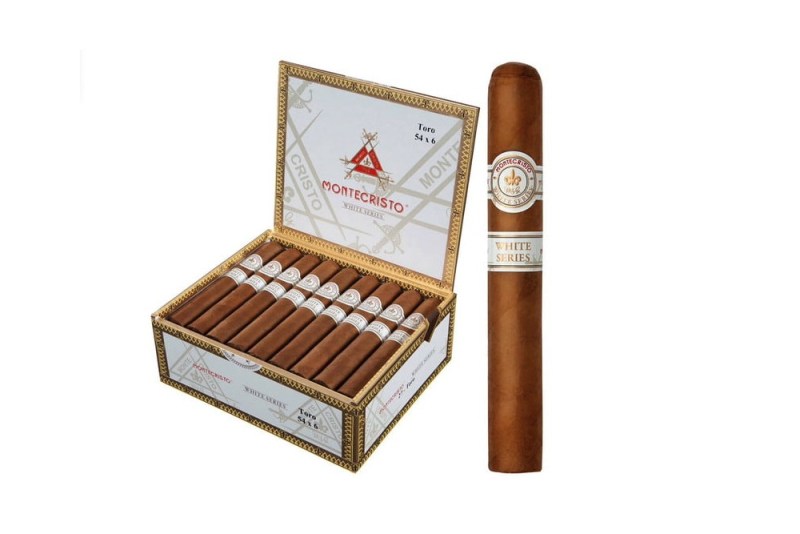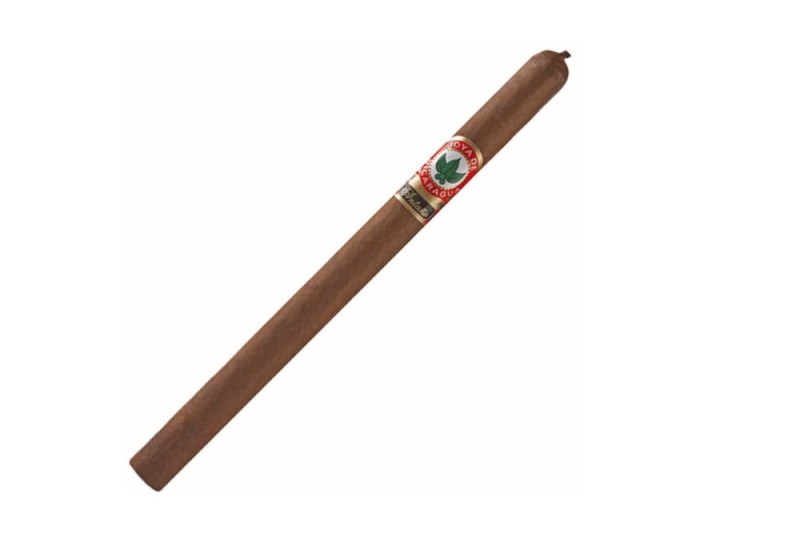
If you’ve never really enjoyed a cigar, maybe it’s not you; it’s the cigars themselves — perhaps you just haven’t found the right cigar for your pleasure. It’s a given that the aroma and flavor of a cigar are primarily derived from the tobacco used to make it, both the filling and the wrapper. But cigar type, meaning shape and size, also significantly impacts how a stogie tastes and smells, not to mention how its profile changes during the smoking process.
Those huge cigars passed out at bachelor parties may start smooth, but can end up heavy and harsh as they burn down. Likewise, a slender cigarillo may burn hot and intense from the start: Size and shape don’t play a direct role in how the cigar will taste or how mellow or potent it will be, but they do dictate the smoke time and, depending on the tobacco used, how the cigar will change while burning down.
All you need to know going in is that cigar size is technically called “vitola.” Vitola refers to the length and thickness of a cigar, with length measured in inches and thickness in ring gauge, which equates to 64ths of an inch. So a 64-ring gauge cigar? That’s an inch thick, which is ridiculously thick, by the way.
Cigars come in various sizes, from short and stubby to long and thin. The size of the cigar will affect the length of time it takes to smoke and the amount of nicotine you will consume. Cigars also come in a variety of strengths, from mild to intense. The cigar’s strength will affect the flavor’s intensity and the amount of nicotine you will consume.
Even if you smoke cigars on rare occasions — or even if you never smoke but want to be in the know, whether for gifting or general knowledge — you should know about these five types of cigars.

The cigar types you need to know
Robusto — Romeo Y Julieta Reserve
The robust is the most popular size of cigar in America today. For a good reason: these cigars are small enough to be enjoyed in a half hour to 45 minutes, yet large enough for a complex flavor profile that develops during the smoking — a typical robust measures between 4.75 to 5.5 inches, with a ring gauge usually around 50. The Romeo y Julieta Robusto is a fantastic entry-point cigar with a medium body and profile notes ranging from toasted nuts to spiced coffee to seasoned leather. They are also a great price.

Corona — Highclere Castle Edwardian
When you picture a cigar, it probably looks like a corona. Famous worldwide, these typically 5.5-inch cigars have a 42-ring gauge. They are an excellent balance of full size without requiring a two-hour commitment and without an overly harsh build-up of tar, yet with plenty of flavor intensity due to the relatively narrow diameter. Highclere Castle Edwardian coronas are rich yet mellow, with creamy caramel notes and a gentle finish.

Toro — Montecristo White
Sometimes called a corona gorda, the toro is fast becoming a popular cigar size. At 6 inches long and with a stout 50-plus-sized ring gauge, these are cigars meant to be savored slowly. The flavor profile changes as you smoke one, and in the case of the Montecristo White Toro, that flavor involves a medium body and a perfect draw that delivers a gently toasted profile.

Panatela/Lancera — Joya de Nicaragua Antano
The terms “lancero” and “panatela” both refer to the same cigar, an elegant shape, and size usually at least 6 inches long — often 7 inches — and has a narrow ring gauge between 34 and 38. They can be delightfully mellow or quite robust depending on the tobacco chosen, which in the case of the Joya de Nicaragua Antano Lancero, is pure Nicaraguan tobacco that produces a rich, bold, peppery profile.

Churchill — Cohiba Dominican
Similar to the persona of the famed British Prime Minister for whom they are named, Churchill cigars are big. Like usually 7 inches long and with a 50-ring gauge. This is your hour-plus cigar, where you can count on a big flavor that changes during the long smoking session. These mighty Cohibas have leather, coffee, spice, and cedar notes derived from proper storage.

What about Cuban cigars?
When you hear about the gold standard of cigars, you often hear about Cuban cigars. Perhaps you’ve even tried one when you were on vacation in the islands. They’re considered among the best cigars in the world because Cuba has the perfect soil for growing the best tobacco, as well as the best wrapper leaves. Unfortunately, you can’t get them anywhere in the U.S., and they have been illegal since the height of the Cold War.
In 1962, the U.S. imposed a trade embargo on all Cuban imports, and that embargo still exists today, so it is illegal to sell Cuban cigars in the U.S. And don’t think about a loophole, even if you’re on vacation and buy the cigars legally in another country — it is illegal to bring them into the U.S. While the ban on Cuban products was slightly loosened in 2020, Cuban-made tobacco and alcohol products (sorry rum fans) are still illegal.
So if you want to experience a Cuban cigar, you need to plan a vacation out of the country, and if you don’t like beach destinations, don’t worry, Cuban cigars are legal in Canada as well.
So next time you’re on a vacation, enjoy a nice Cuban cigar; just don’t try to bring them home.



